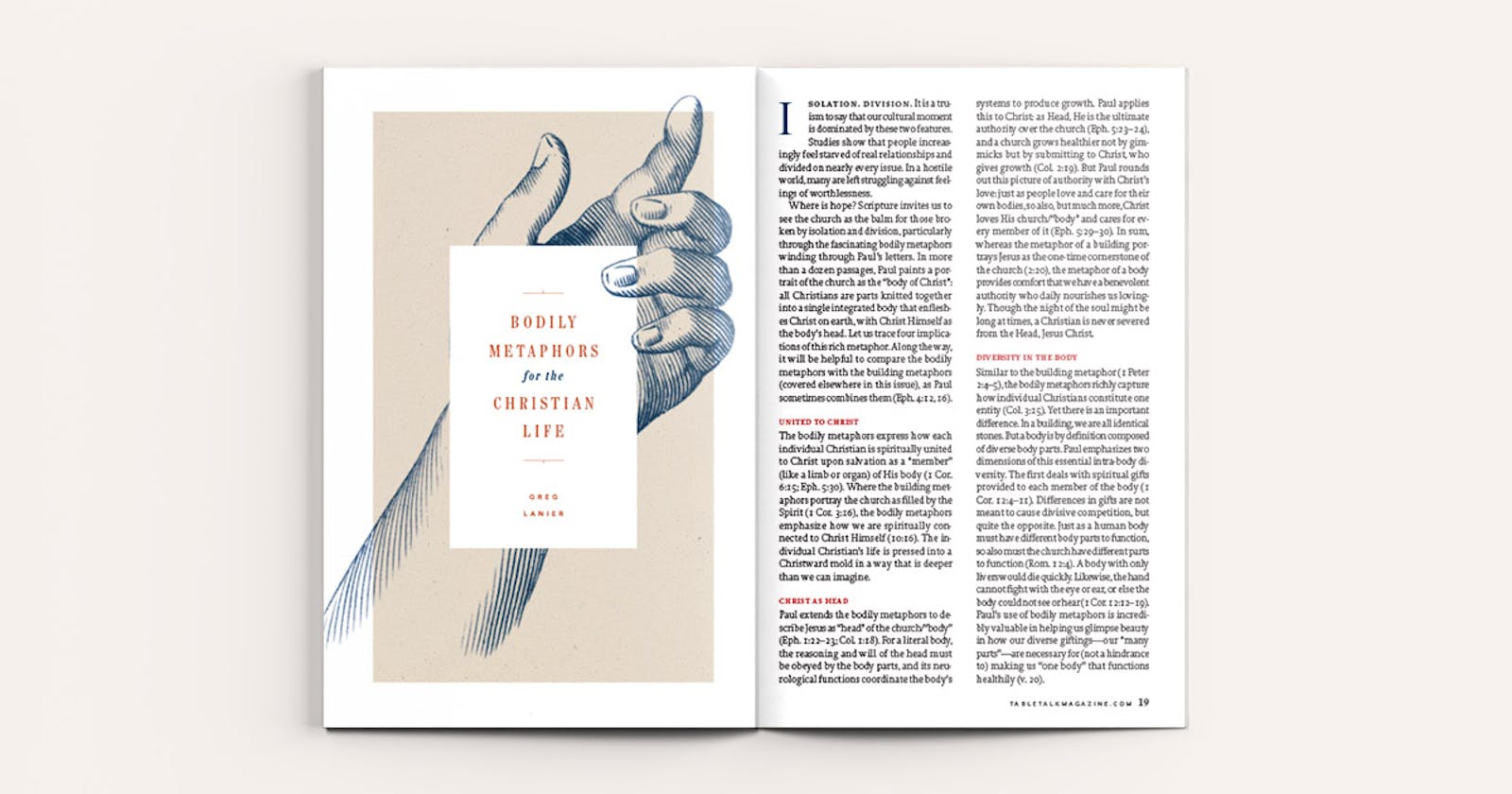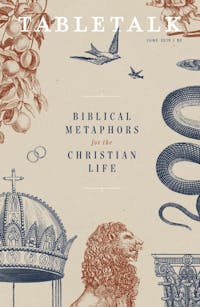
Request your free, three-month trial to Tabletalk magazine. You’ll receive the print issue monthly and gain immediate digital access to decades of archives. This trial is risk-free. No credit card required.
Try Tabletalk NowAlready receive Tabletalk magazine every month?
Verify your email address to gain unlimited access.
Isolation. Division. It is a truism to say that our cultural moment is dominated by these two features. Studies show that people increasingly feel starved of real relationships and divided on nearly every issue. In a hostile world, many are left struggling against feelings of worthlessness.
Where is hope? Scripture invites us to see the church as the balm for those broken by isolation and division, particularly through the fascinating bodily metaphors winding through Paul’s letters. In more than a dozen passages, Paul paints a portrait of the church as the “body of Christ”: all Christians are parts knitted together into a single integrated body that enfleshes Christ on earth, with Christ Himself as the body’s head. Let us trace four implications of this rich metaphor. Along the way, it will be helpful to compare the bodily metaphors with the building metaphors (covered elsewhere in this issue), as Paul sometimes combines them (Eph. 4:12, 16).
United to Christ
The bodily metaphors express how each individual Christian is spiritually united to Christ upon salvation as a “member” (like a limb or organ) of His body (1 Cor. 6:15; Eph. 5:30). Where the building metaphors portray the church as filled by the Spirit (1 Cor. 3:16), the bodily metaphors emphasize how we are spiritually connected to Christ Himself (10:16). The individual Christian’s life is pressed into a Christward mold in a way that is deeper than we can imagine.
Christ as Head
Paul extends the bodily metaphors to describe Jesus as “head” of the church/“body” (Eph. 1:22–23; Col. 1:18). For a literal body, the reasoning and will of the head must be obeyed by the body parts, and its neurological functions coordinate the body’s systems to produce growth. Paul applies this to Christ: as Head, He is the ultimate authority over the church (Eph. 5:23–24), and a church grows healthier not by gimmicks but by submitting to Christ, who gives growth (Col. 2:19). But Paul rounds out this picture of authority with Christ’s love: just as people love and care for their own bodies, so also, but much more, Christ loves His church/“body” and cares for every member of it (Eph. 5:29–30). In sum, whereas the metaphor of a building portrays Jesus as the one-time cornerstone of the church (2:20), the metaphor of a body provides comfort that we have a benevolent authority who daily nourishes us lovingly. Though the night of the soul might be long at times, a Christian is never severed from the Head, Jesus Christ.
Diversity in the Body
Similar to the building metaphor (1 Peter 2:4–5), the bodily metaphors richly capture how individual Christians constitute one entity (Col. 3:15). Yet there is an important difference. In a building, we are all identical stones. But a body is by definition composed of diverse body parts. Paul emphasizes two dimensions of this essential intra-body diversity. The first deals with spiritual gifts provided to each member of the body (1 Cor. 12:4–11). Differences in gifts are not meant to cause divisive competition, but quite the opposite. Just as a human body must have different body parts to function, so also must the church have different parts to function (Rom. 12:4). A body with only livers would die quickly. Likewise, the hand cannot fight with the eye or ear, or else the body could not see or hear (1 Cor. 12:12–19). Paul’s use of bodily metaphors is incredibly valuable in helping us glimpse beauty in how our diverse giftings—our “many parts”—are necessary for (not a hindrance to) making us “one body” that functions healthily (v. 20).

The second dimension of diversity within the body deals with diversity of people groups. Paul sketches how Christ’s saving work has ended all hostility along socioethnic lines and brought formerly alienated groups into one body, once for all (Eph. 2:14–16; 3:6). Whether we are talking about Jew-gentile division of Paul’s day or the racial/ethnic divisions of today (in America, Malaysia, China, Eastern Europe, or anywhere else), the glory of the gospel is this: since salvation is by faith alone (not DNA or any externality), the church brings unity across people groups while celebrating the rich blessings each uniquely contributes to the body. The unified body thrives not despite its diversity but because of it.
United to One Another
There is a final illuminating difference between the building and bodily metaphors: the former places us side by side as bricks in a wall, while the latter convey the living, breathing way we are “members of one another” (Rom. 12:4; Eph. 4:25). We are united not only to Christ but also to each other in a way that no other earthly organization, club, or team can offer. Like body parts that share the same blood, neural pathways, and so forth, Christians belong to each other—indeed, we need one another—in a way that we barely understand. For this reason, Paul exhorts us to care tenderly for the weaker members among us, not to ignore or despise them, drawing an analogy from physical bodies in which vulnerable body parts are offered more care, not less (1 Cor. 12:21–25). If we are members of one another in the body of Christ, the health of one affects all (v. 26).
If all this is true, the metaphor of the “body of Christ” casts a stunning vision for what the church can be. No church is perfect, but on its best days a church should be the place where there is no isolation, for we are beckoned into relationship with other members of the body and Christ our Head. No true believer is amputated from the body of Christ. The church should also be a place where differences in gifts or people groups lead not to divisive tribalism but to a unity forged from diversity, which the world can never achieve. And through all this, the church should be a place where hurting people, weighed down by suffering and sin, can be nourished back to health and treated with utmost dignity and worth—not left abandoned. May the bodily metaphors for church life call us continually to such a vision.
